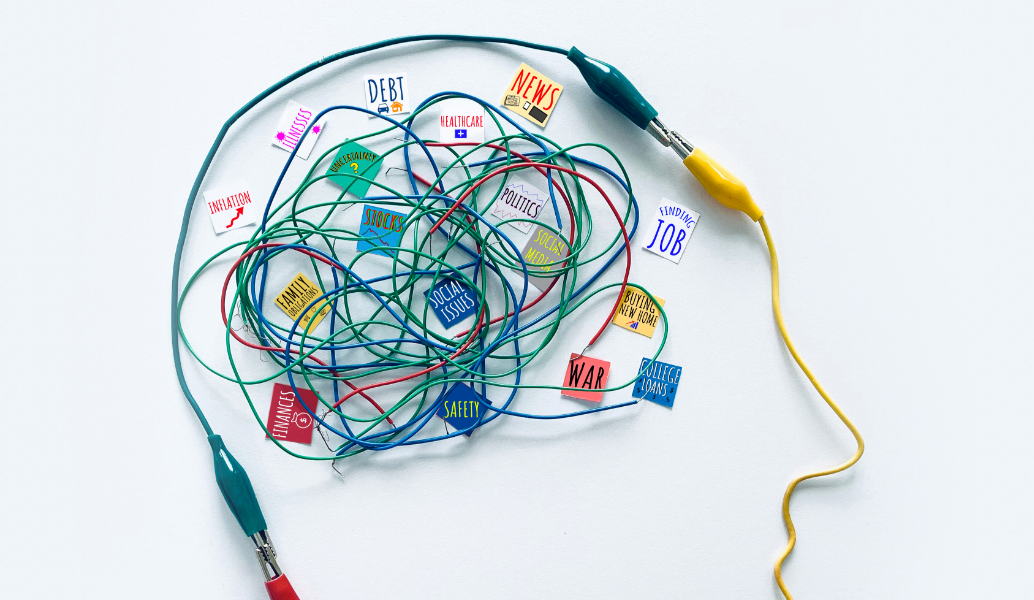
The Neuropsychology of Stress and Anxiety: Insights for HR Leaders
Understanding the neuropsychology of stress and anxiety
Most of us are familiar with the feelings of stress and anxiety: raised blood pressure, a tight chest, and racing thoughts. To effectively handle these emotions, it is crucial to take a neuroscientific perspective and understand the underlying biological reasons.
As HR leaders, having this awareness helps open discussions with your teams, leading to better solutions and support tailored to individuals' needs. And helps inform the development of HR strategies for stress support. Let's delve into the neuropsychology of stress and anxiety to take the first step in addressing them more healthily.
Understanding stress and anxiety and how the brain responds
Stress can stem from various sources, including deep-seated trauma or increased pressure at work. When we perceive a threat, our brains shift into survival mode, activating the amygdala responsible for our survival instincts. In this state, the amygdala becomes overactive, impairing logical thinking and clarity. This means other parts of the brain have reduced energy for their functions, leading to forgetfulness, disorganisation, mood fluctuations, and difficulty regulating emotions during periods of work-related stress.
How does prolonged stress impact anxiety?
Understanding stress and anxiety is rooted in our biology. Anxiety occurs when the amygdala remains consistently overactive, anticipating threats that may not yet exist. Prolonged stress can even cause physical changes in the brain, with the amygdala growing stronger compared to other areas. This heightened state keeps individuals in a constant survival mode, negatively impacting concentration, decision-making, and overall task performance.
What strategies can employees use for managing workplace stress?
Managing workplace stress is not only the right thing to do – it’s also an important productivity driver. While stress and anxiety have their roles in keeping us alert, prolonged and excessive levels become detrimental to our physical and mental wellbeing. Here are three tools you can recommend to employees to help them manage stress and anxiety and rebalance brain function:
- Recognising stress or anxiety: Observe your thoughts, feelings, and sensations, remembering that you are separate from them. This mindful approach helps slow down the mind.
- Breathing exercises: Practice deep, slow breaths to activate the restful side of the nervous system, known as the parasympathetic system.
- Seeking intentional intervention: Psychologists, psychotherapists, and counsellors provide insights and support in understanding specific struggles, gaining clarity, and shifting perspectives beyond anxious thoughts.
Understanding stress and anxiety and the impact on employees
Stress and anxiety can hijack the brain, affecting emotions and performance. However, we have the power to regain control. By strengthening the logical and reasoning areas of our minds, we can overcome racing thoughts and effectively manage stress without long-term negative effects.
What more can I do to help employees facing stress and anxiety?
Developing HR strategies for stress support can be complex. Everyone responds to stress and anxiety differently. So, we’ve created a handy checklist for HR leaders and managers of people to help understand individual differences – and how to provide support.
Checklist: Considering individual differences in stress responses:
- Recognise Diversity in Stress Responses: Understand that individuals have diverse ways of responding to stress. Some may become more introverted, while others may become more assertive. Some individuals may thrive under pressure, while others may struggle. Avoid making assumptions based on stereotypes and strive to understand each person's unique stress response.
- Encourage Open Communication: Create a culture where individuals feel comfortable discussing their stress levels and responses. Encourage open dialogue, active listening, and empathy. This allows HR leaders to gain insights into individual experiences and tailor support accordingly.
- Assess Personal Coping Strategies: Recognise that individuals have different coping mechanisms for managing stress. Some may find solace in physical exercise, while others may prefer creative outlets or mindfulness practices. Take the time to understand the coping strategies that work best for each employee and promote a range of options for stress management.
- Flexibility in Work Arrangements: Consider offering flexible work arrangements that accommodate individual stress responses. This may include options for remote work, flexible hours, or adjusted workload during particularly stressful periods. Providing flexibility allows individuals to find a balance that works for them and reduces unnecessary stressors.
- Provide Training and Resources: Offer training programs or resources that educate employees and managers about stress management techniques and strategies. These resources can help individuals develop their own personalised approaches to stress management, considering their unique needs and preferences.
- Tailor Support: When employees express stress or seek support, provide personalised assistance that considers their individual circumstances. This might involve offering access to counselling services, connecting them with relevant support networks or mental health support, or providing accommodations based on specific needs.
- Encourage Self-Care and Wellbeing: Promote the importance of self-care and wellbeing for all employees. This can include initiatives such as wellness programs, mindfulness sessions, or promoting a healthy work-life balance. Encouraging self-care sends the message that employee wellbeing is a priority and that individual needs are valued.
- Regular Check-ins: Conduct regular check-ins with employees to assess their stress levels and offer support. This can be done through one-on-one meetings, employee surveys, or informal conversations. Checking in allows HR leaders to proactively address stress concerns and adjust strategies as needed.
- Continual Learning and Adaptation: Recognise that the understanding of stress and individual responses is an ongoing process. Stay informed about current research and best practices in stress management. Continually reassess and adapt HR strategies and initiatives based on new insights and employee feedback.
By considering individual differences in stress responses and avoiding a one-size-fits-all approach, HR and business leaders can create a supportive environment that respects and accommodates the diverse needs of their employees. This approach fosters employee wellbeing, productivity, and overall organisational success.
As HR leaders, understanding the neuropsychology of stress and anxiety empowers you to develop strategies that support individuals facing work-related or personal stress. By implementing these insights, you can develop HR strategies for stress support that foster a healthier and more resilient workforce. If you have any questions or would like to know more, get in touch!
Find out for yourself how Plumm is powering business growth one mind at a time, book a free demo now!



